Philips OLED769 is the entry-level OLED model from the Dutch manufacturer for 2024, but don’t let that mislead you. OLED769 surprises with its image quality and several interesting features. Thanks to OLED technology, the colours are truly vivid, and the contrast is very good – deep blacks and bright highlights displayed on this screen make a difference, especially when watching evening series. When it comes to motion fluidity, OLED769 performs really well. The 120 Hz panel handles dynamic scenes excellently, whether it's sports or games. When it comes to gaming on consoles, the television does not disappoint either – 4 HDMI 2.1 ports support VRR and ALLM, and the fast response time ensures smooth and responsive gameplay. And what about Ambilight? It’s a classic Philips feature and one of those functions that either you love or hate. In this model, it works very well – the backlighting responds to the content on the screen and adds atmosphere, particularly in a dark room. It’s not something that everyone will consider essential, but it does make an impression in the evenings – at least on us. As for the new operating system TitanOS, it leaves us with mixed feelings. It operates quickly, but some popular applications are missing. For more demanding users, it might lack the flexibility that earlier Philips systems (GoogleTV) offered. Philips OLED769 is a good choice for those looking for a television with beautiful image quality and the exceptional addition of Ambilight. The image quality and motion fluidity will satisfy most users, and the minor limitations of the operating system will not be a hindrance if you prioritise basic applications. It’s a solid option for both watching films and gaming.
- Matching (Score)
- Our verdict
- TV appearance
- Where to buy
- Contrast and black detail
- HDR effect quality
- Factory color reproduction
- Color reproduction after calibration
- Smoothness of tonal transitions
- Image scaling and smoothness of tonal transitions
- Blur and motion smoothness
- Console compatibility and gaming features
- Input lag
- Compatibility with PC
- Viewing angles
- TV efficiency during daytime
- Details about the matrix
- TV features
- Apps
- Playing files from USB
- Sound
Philips OLED769 vs Hisense U8Q
Direct compare
OLED769 / AMIBLIGHT TV
U8Q

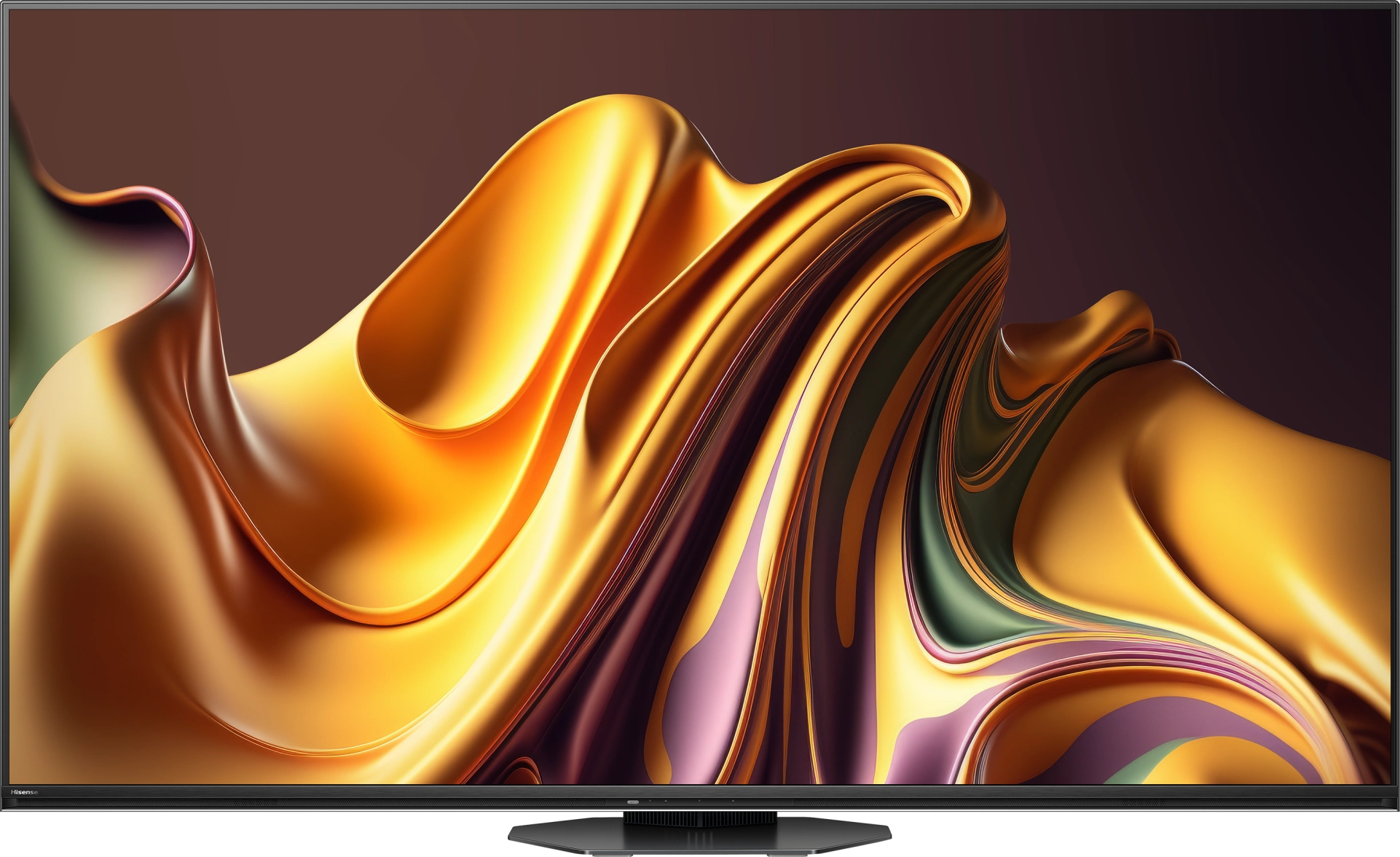
Panel type: WRGB OLED
Resolution: 3840x2160
System: Titan OS
Model year: 2024
Complete the survey to find out the result

Panel type: LCD VA
Resolution: 3840x2160
System: VIDAA
Model year: 2025
Complete the survey to find out the result

Overall rating
7.3
8.0
Movies and series in UHD quality
7.7
7.8
Classic TV, YouTube
8.4
7.6
Sports broadcasts (TV and apps)
8.3
7.2
Gaming on console
9.2
8.6
TV as a computer monitor
7.6
8.4
Watching in bright light
4.6
8.2
Utility functions
5.7
9.4
Apps
6.2
7.7
Sound quality
6.7
7.8
Complete the survey to find out what fits your preferences
Advantages
Great contrast
Perfect choice for gamers and sports - HDMI 2.1, 120Hz, low input lag
3-sided Ambilight system
Excellent colour reproduction after calibration
Great blacks and contrast
Incredibly high brightness
Full HDR format package: HDR10, HDR10+, Dolby Vision
Good motion fluidity - 165Hz panel
Outstanding usability in difficult lighting conditions (High brightness + New anti-reflective coating on the panel)
Many features for gamers, VRR, ALLM, HDMI 2.1, 288Hz for PC
All 3 ports in HDMI 2.1 standard (Finally!)
USB-C with video signal sending capability (Displayport)
Many features in the Vidaa system
Support for DTS and Dolby Atmos
Disadvantages
Poorly developed operating system - TitanOS
Average brightness
Missing some applications in the Vidaa operating system
At maximum volume, the television shakes slightly
The television tends to "overexpose" the image in 4K HDR materials.
Our verdict
The Hisense U8Q is a television that makes it hard not to feel that the manufacturer approached the topic with the ambition of a top student. The picture is strong, vibrant and contrasting – as if it were shouting: “look, I can do more than most in this price range!” And indeed, there is some truth to this. The secret lies in the large number of dimming zones in Mini-LED technology. Thanks to this, HDR does not just come down to promises in the brochure, but can actually impress – especially during evening viewings. It's also hard to complain about motion fluidity. Watching matches and fast-paced games is enjoyable, and although the ball may sometimes leave a slight trace, for 99% of viewers this will be a detail of little importance in everyday watching. Gamers also have reasons to be pleased here – although it's worth mentioning the lack of HGiG functionality right away. Aside from that, however, it is really good: low input lag, three HDMI 2.1 ports and a full set of gaming features make the U8Q one of the more interesting Mini-LEDs for console fans. Of course, there are no perfect products. The television still carries some “mini-LED” remnants, and the Vidaa system – although full of features – can be less intuitive and has a more modest selection of apps than competing platforms. But are these serious drawbacks or rather minor jabs in the context of the price and what we actually get? We leave the answer to that question to you!
TV appearance
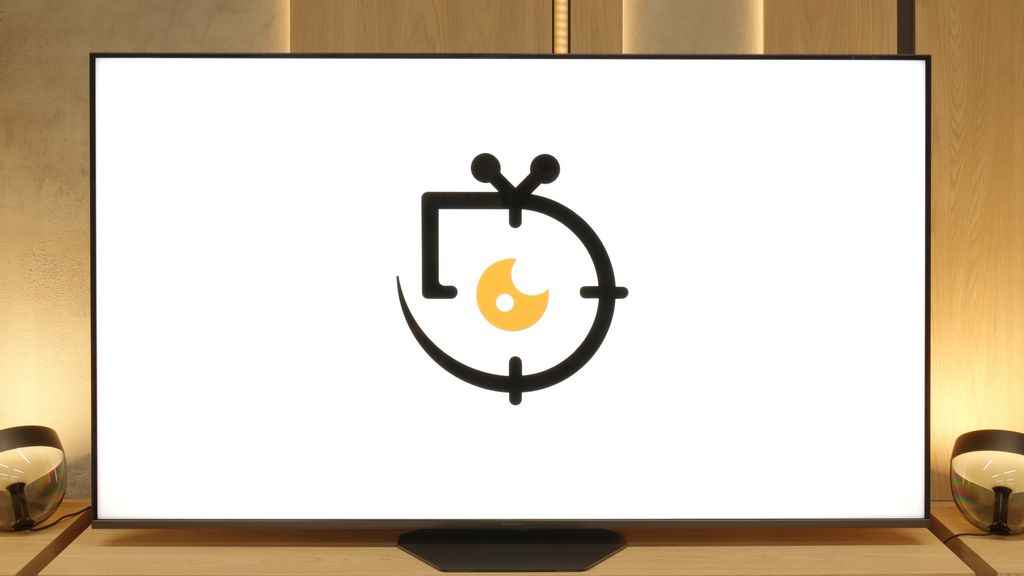
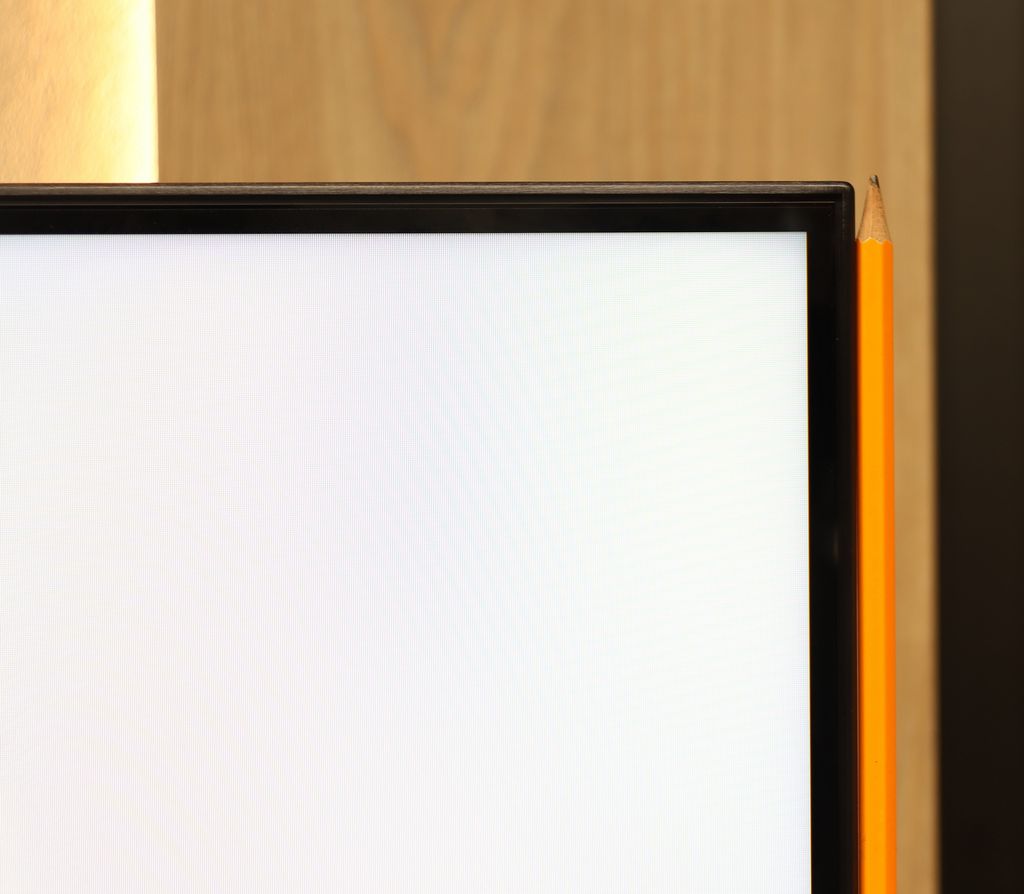
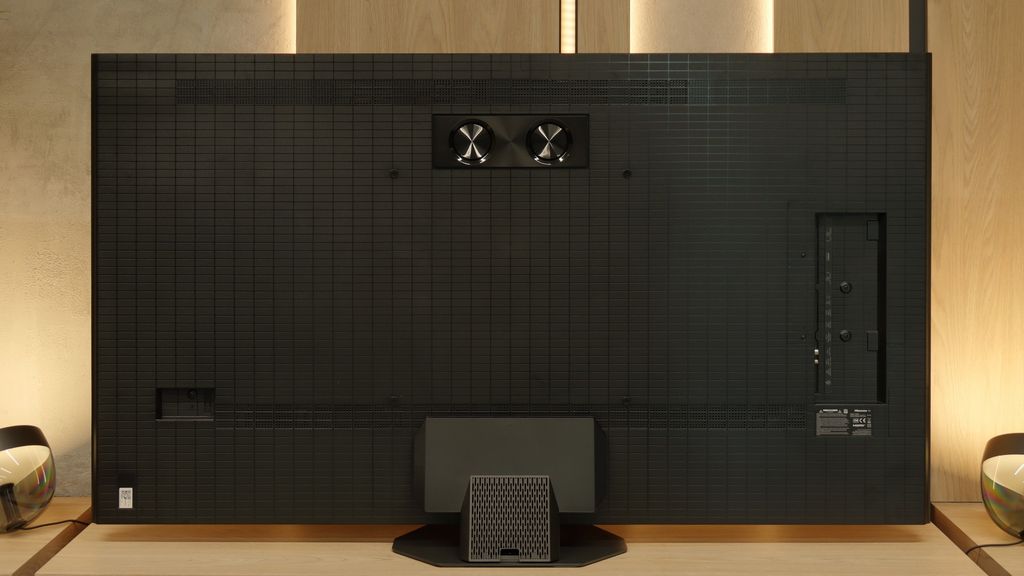
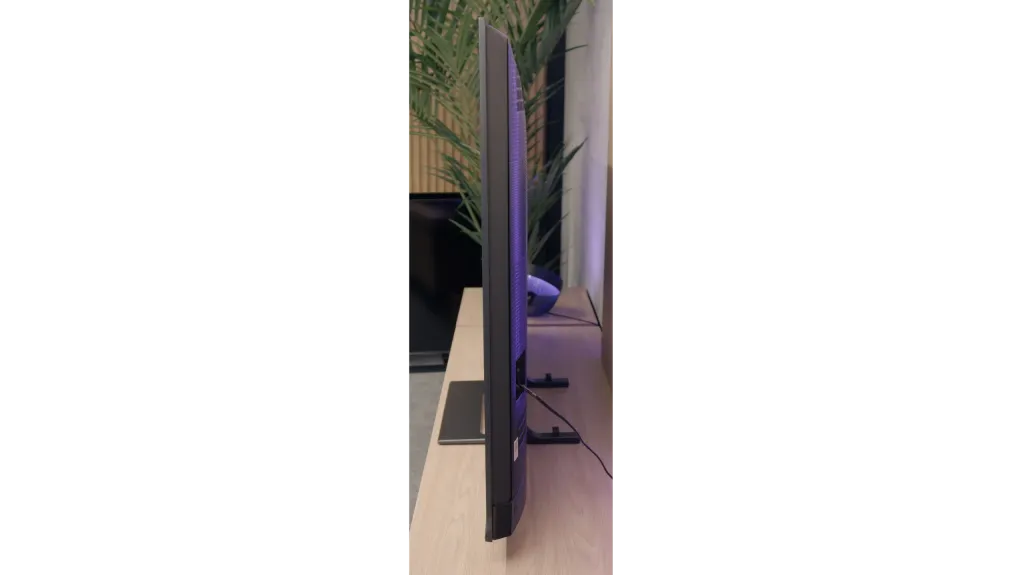
Contrast and black detail
10/10
8.6/10
Local dimming function: Yes, number of zones: 2048 (32 x 64)
Contrast:

Result
∞:1

Result
∞:1

Result
∞:1

Result
∞:1

Result
∞:1

Result
1,024,000:1

Result
140,000:1

Result
35,000:1

Result
22,350:1

Result
22,300:1
Halo effect and black detail visibility:

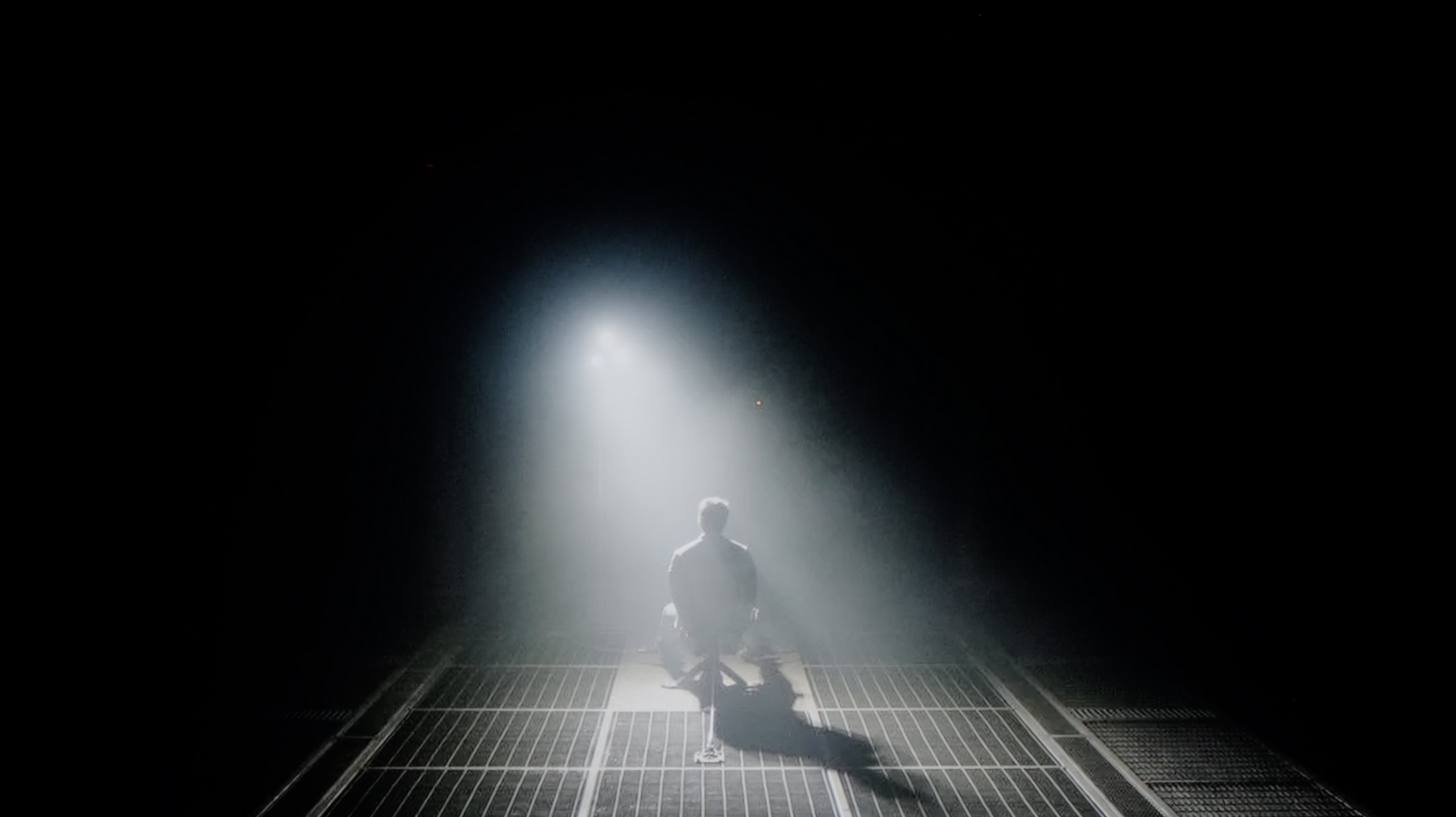
Philips OLED769 impresses with its black levels and contrast. Thanks to OLED technology, each pixel in this television is self-illuminating, allowing for the complete shutdown of individual pixels. This means that black areas of the image are pitch black, and the contrast is infinite. The effect is incredibly realistic, with excellent clarity and detail in dark scenes. The OLED panel used in Philips OLED769 is produced by LG, known as WOLED, ensuring the highest quality in black reproduction. As a result, the television offers a contrast that is unattainable for traditional LCD televisions - even the best ones on the market.
The unit of Hisense U8Q that we tested, measuring 65 inches, is equipped with a VA panel, which in itself offers high native contrast. However, this is not the greatest strength of this model – the key lies in the Mini LED backlighting. Thanks to the use of thousands of dimming zones and a well-developed light management algorithm, the contrast in the U8Q can be described as excellent, especially for a TV of this technology.
The best results reach a level of around one million to one – a result that commands respect and places the U8Q among the top Mini LED televisions. Indeed, there are certain hiccups and even drops in contrast, but they are not as dramatic as in many other models of this class that we have tested on our portal. It should also be noted that like every Mini LED television, the U8Q is not entirely free from typical imperfections – sometimes the image may be dimmed too much or slight blooming with a halo effect may appear. However, this does not change the overall impression: the contrast in the Hisense U8Q is stunning and constitutes one of the greatest assets of this model.
HDR effect quality
6.1/10
7.6/10
Luminance measurements in HDR:

Result
609 nit

Result
707 nit

Result
801 nit

Result
775 nit

Result
261 nit

Result
2195 nit

Result
725 nit

Result
1652 nit

Result
485 nit

Result
1541 nit
Scene from the movie “Pan” (about 2800 nits)


Scene from the movie “Billy Lynn” (about 1100 nits)


Static HDR10


Dynamic: Dolby Vision
Dynamic: Dolby Vision


HDR luminance chart:
Hisense U8Q
HDR luminance
Philips OLED769
HDR luminance
Luminance of RGB colors
Philips OLED769 performs quite well, particularly in film scenes with small points of light. The television surprises with its brightness, reaching around 800 nits, which is an impressive result. As a result, fine sources of light, such as street lamps at night or stars in the sky, are sharp and full of detail. However, the biggest challenge for this model is the scene with a full-screen burst of sunlight. In such moments, the brightness drops to about 250 nits, which is not very impressive. This is a typical problem for cheaper OLED displays, which struggle to maintain high brightness across the entire screen surface.
When it comes to HDR, the Hisense U8Q shows its claws. On paper, that is, in synthetic measurement tests, the television can achieve nearly 4000 nits of peak brightness. This is a value that most models can only envy. In practice, this translates to very strong light effects in films – in some scenes, we managed to measure a real brightness of between 1500 and 2000 nits, which is a level typically reserved for the absolute top tier of televisions on the market.
Of course, it's not always perfect. In small, pinpoint elements, brightness can drop – a good example is scene number 4 from the film Sicario 2, where instead of thousands of nits, we get around 500. But it’s worth noting that the effect does not disappear completely – the light is still visible, and the image does not seem artificially dimmed. This is a typical issue with Mini LEDs, so it's difficult to consider this a major downside.
On the other hand, the colour reproduction is a huge plus. Thanks to additional coatings that enhance colour saturation, the U8Q nearly covers the entire DCI-P3 colour space (98%), and for the wider BT.2020 range, it achieved over 80%. This is an excellent result that makes HDR films look rich, vivid, and simply very cinematic.
Factory color reproduction
6.4/10
7/10


Factory Mode
After calibration


Factory Mode
After calibration
The "Film" mode proved to be the best factory setting in terms of fidelity to the source material, and it is on this that we based our tests. However, like other factory modes, it was not without flaws. Let us examine, therefore, what exactly went wrong in SDR and HDR materials.
In both cases, the white balance was disrupted by the excessive dominance of green and red hues. This phenomenon created a yellowish tint that spread across the entire image, leading to issues such as yellowed whites and unnatural skin tones. These problems were clearly highlighted on the "ColourChecker" palette, where each of the samples was shifted towards warmer tones.
As for contrast and brightness, in the Philips OLED769, we can look at two key graphs: Gamma for HD content and the EOTF curve for 4K HDR content. In the case of the first graph, the gamma value falls below the optimal level of 2.4, resulting in an increase in brightness of light areas of the image. This means that bright elements may be slightly overexposed, losing detail and depth. In contrast, the EOTF curve for 4K HDR content performs really well. The graph shows that the television effectively conveys details in both the brightest and darkest areas of the image, resulting in a realistic and dynamic representation of scenes.
We must admit that when the U8Q arrived at our editorial office, we were slightly surprised… and positively so. Usually, in televisions, the white balance immediately requires adjustment – it can be too warm or too cold, which immediately leads to strange colour mistakes. Meanwhile, here the situation looks really good straight out of the box. Of course, we are talking about our unit, so there is no guarantee that every model will be equally well calibrated, but in our case, the first impressions were very positive. The only more apparent issue concerned the way the television manages brightness. Looking at the EOTF graph, it is clear that the U8Q tends to brighten small elements on the screen. This, in turn, caused what we mentioned earlier – slight overexposure and the impression that the entire scene can be a bit too bright. However, this is not a flaw that undermines the picture, rather an effect characteristic of this model.
Color reproduction after calibration
8.8/10
8/10




After professional calibration, Philips OLED769 truly shines in terms of colour accuracy. The television has been completely stripped of any yellow tint in both HD and 4K content. The Colour Checker test confirms that deltaE errors are minimal, occasionally exceeding a value of 2, which means we can speak of almost perfect director's representation.
When it comes to contrast, the situation is equally impressive. With 4K materials, there wasn't much to improve initially, while the gamma chart has been significantly enhanced. This allows dark and light areas of the image to be represented with greater accuracy, resulting in a realistic and dynamic portrayal of scenes.
The calibration has allowed the full potential of this television to be unleashed, both in terms of colours and contrast. Philips OLED769 now offers vivid, natural images of high quality that will delight any user, whether they are watching films or using other multimedia.
Of course, we wouldn’t be ourselves if we didn’t make adjustments to the white balance. After calibration, we managed to equalise the SDR signal to practically perfection – older films, YouTube content, and classic television looked almost ideal on the U8Q. This is truly an exceptional level that shows this model can do a lot if given a bit of help. Unfortunately, the situation is different with HDR content. The colours themselves don’t pose many problems, but the U8Q’s biggest issue remains the EOTF brightness characteristics. In practice, the television tends to “over-expose” beyond how the image should look in its original form. It’s that slight "bleeding" that we noticed earlier in comparisons with the best screens on the market. It’s a bit of a shame that this characteristic can’t be fully tamed – if we could maintain equally good control over brightness in HDR as in SDR, we would be dealing with an absolutely reference-quality image.
Smoothness of tonal transitions
5.9/10
8.9/10







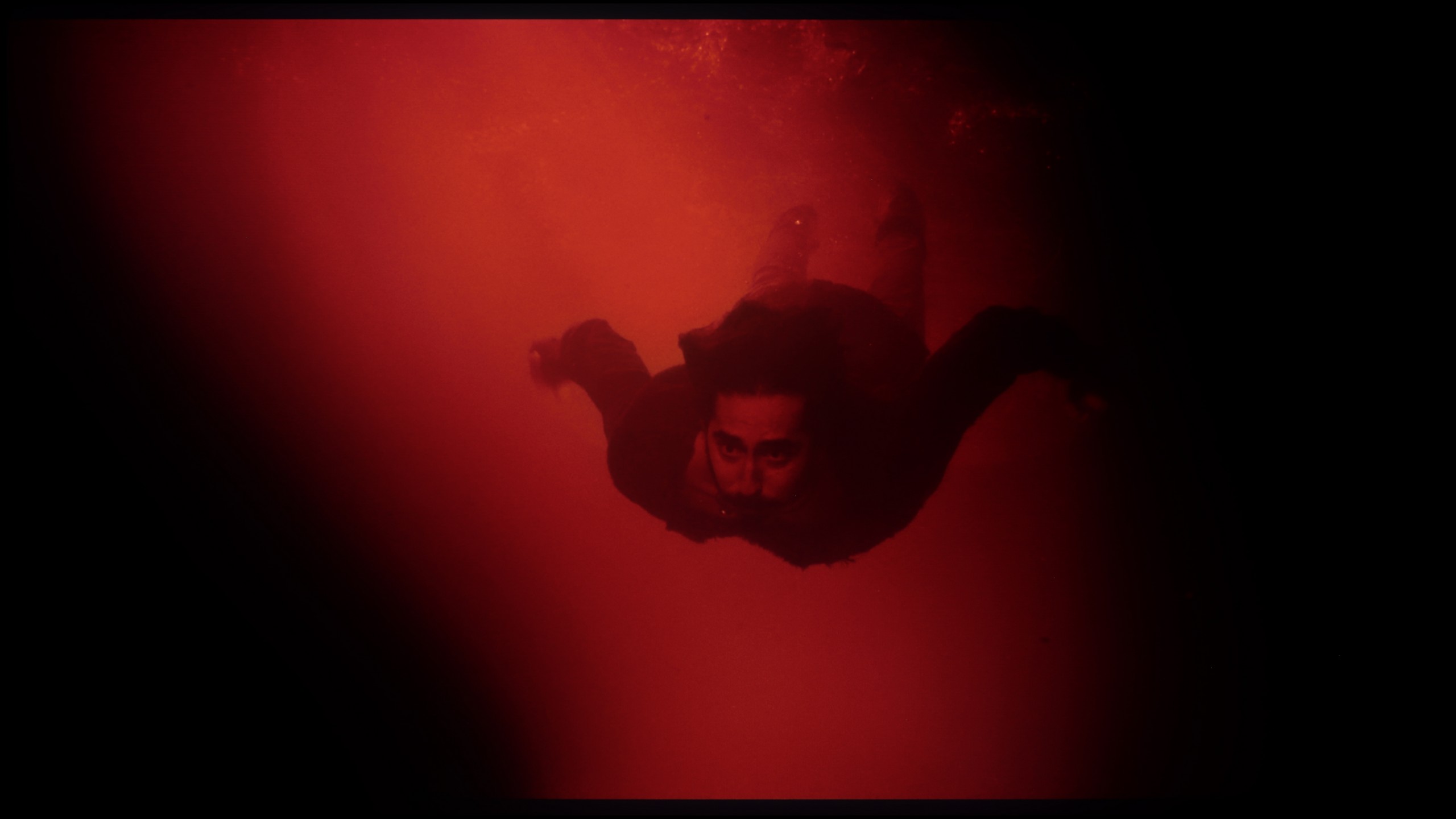




The gradation in Philips OLED769 unfortunately proves problematic in almost every scene from the test sequence. Particular difficulties arise in dark colours and around black. In these areas, in addition to the posterisation effect, the image is enhanced by a solid dose of noise. The problem with tonal transitions is not limited to dark hues – it can also be seen in lighter elements, such as in a scene from the film "Kingsman," where clear colour banding is visible around the sun. This phenomenon can significantly affect the visual perception, especially in scenes where black and dark shades play a key role. It's hard not to notice these imperfections, which can disrupt the viewing experience, particularly for viewers who value excellent image quality.
When it comes to the fluidity of tonal transitions, the Hisense U8Q made a really great impression on us. Even in the darkest scenes, where unsightly bands and ugly transitions usually appear on other televisions, here the image remains smooth and cohesive. Nothing layers, there is no "stair-step" effect – everything looks as it should. Similarly, in brighter shots – it is also very good. Sure, if we looked through a magnifying glass, we would probably find some minor flaw, but during normal viewing, it's hard to complain about anything. Overall, it performs very, very well!
Image scaling and smoothness of tonal transitions
7.2/10
8/10
Smooth transition function

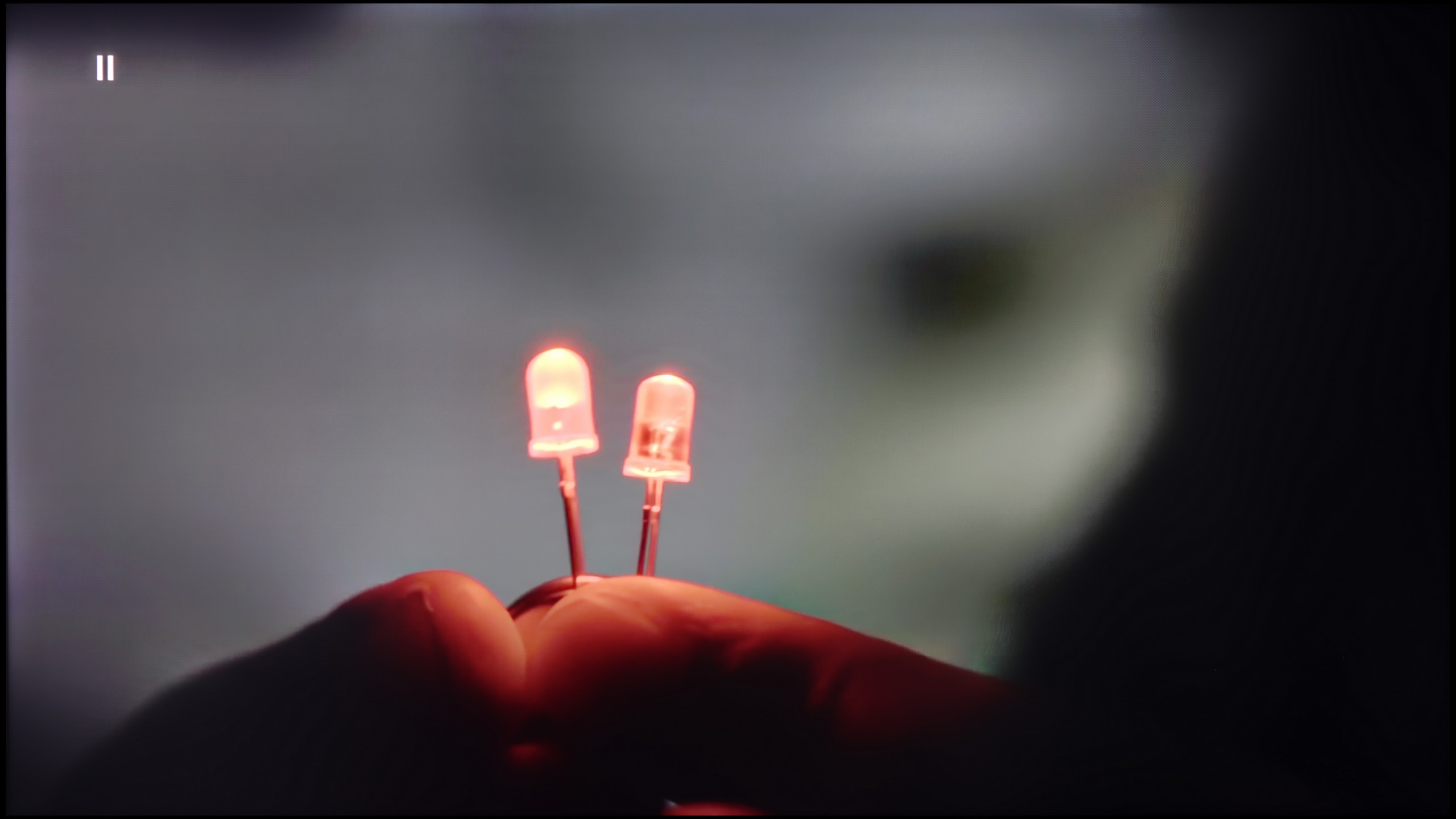
Image without overscan on the SD signal


When it comes to lower quality materials, the distortion reduction in the Philips OLED769 handles tonal transitions well, especially at the minimum setting. It is worth noting that at this setting, film grain is not blurred, which is a pleasant surprise, as such negative phenomena often occur with other manufacturers. Overall, it is quite a decent solution. However, it should be pointed out that this setting does not work in HDR mode, where gradation issues are much more pronounced. In HDR mode, the television struggles with smoothing tonal transitions and may present more noticeable distortions and noise, reducing picture quality in dynamic scenes.
Regarding digital processing, the Philips OLED769 performs well. The model in the photo is not overly jagged, and the branches in the background lack the characteristic jagged edges. The television achieves this effect thanks to the absence of artificial sharpness, which may be an advantage for some users. Others, however, may find this less attractive, as they prefer a more vibrant, sharper image instead of a subtle effect. This effect can be mitigated by using a higher setting for the "Sharpness" parameter.
Hisense U8Q handles lower quality materials quite well. The television can smooth out tonal transitions thanks to the "Smooth and Gradient Picture" feature – it works best when set to Medium. At this setting, it nicely dims unwanted bands and unevenness in the picture, but importantly, it does not remove the film grain or fine details.
The upscaling itself is also at a good level. Images from lower resolutions appear smooth and soft, sometimes even overly so – we get a plastic effect that may not appeal to everyone. Fortunately, this can be easily corrected with the sharpness slider, allowing the picture to be adjusted to personal preferences.
Blur and motion smoothness
8.3/10
7.8/10

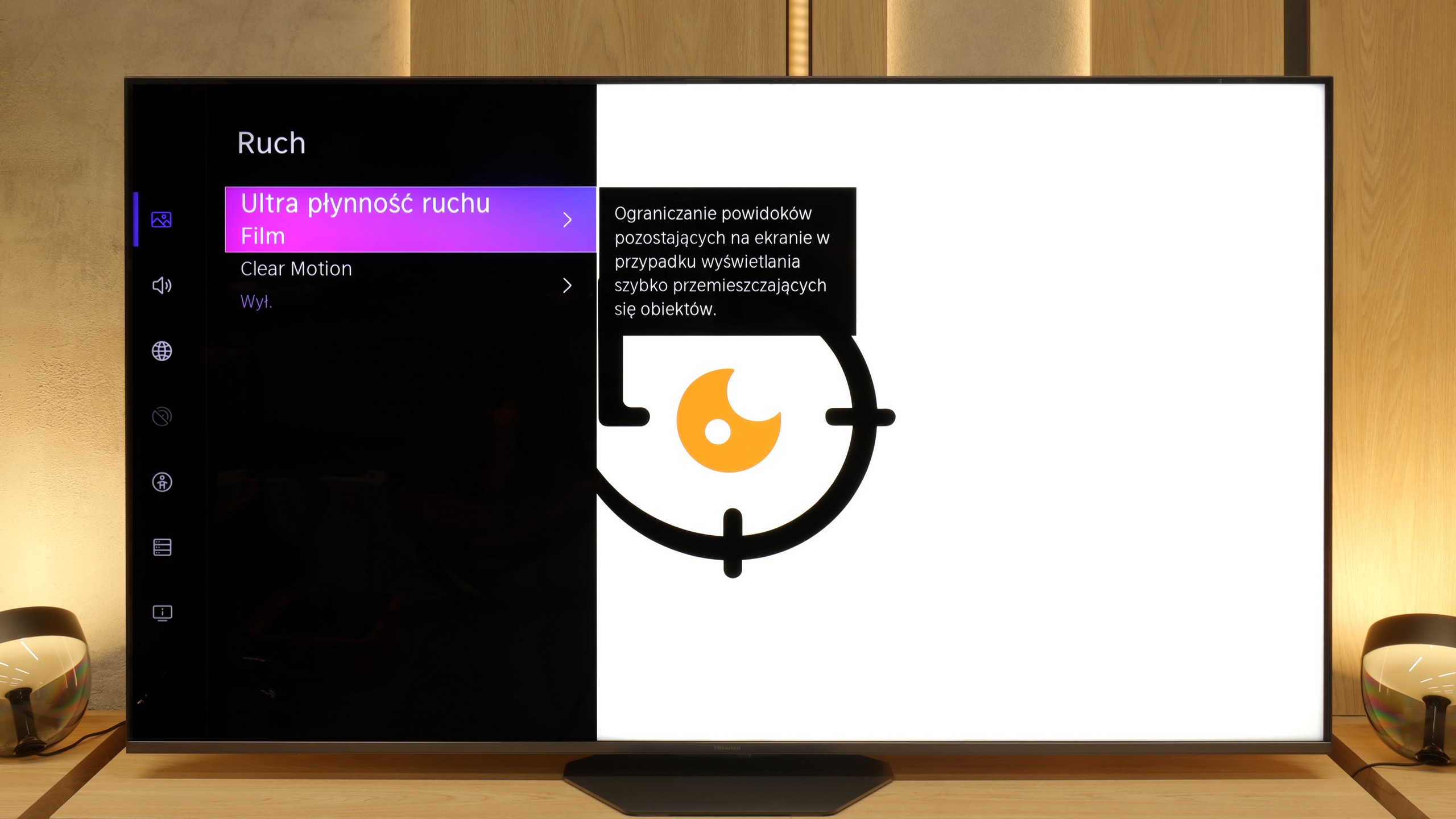
Blur (native resolution, maximum refresh rate):



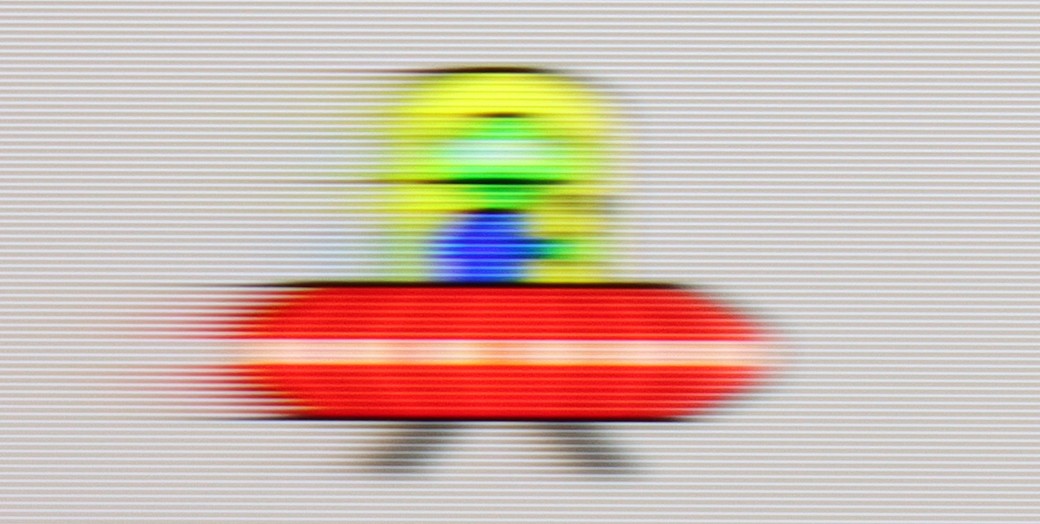
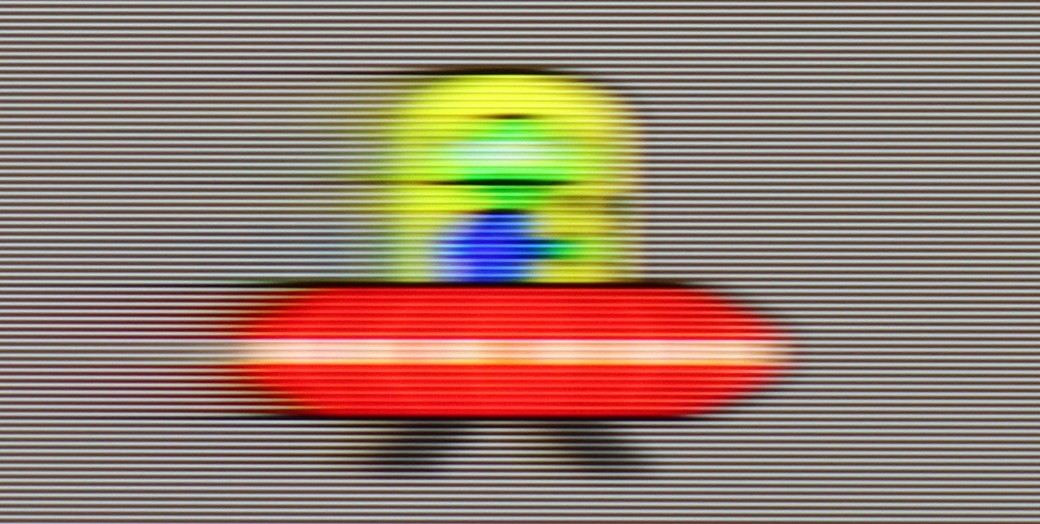

Blur (BFI function enabled):



Smużenie ():
Smużenie (1080p@288Hz):

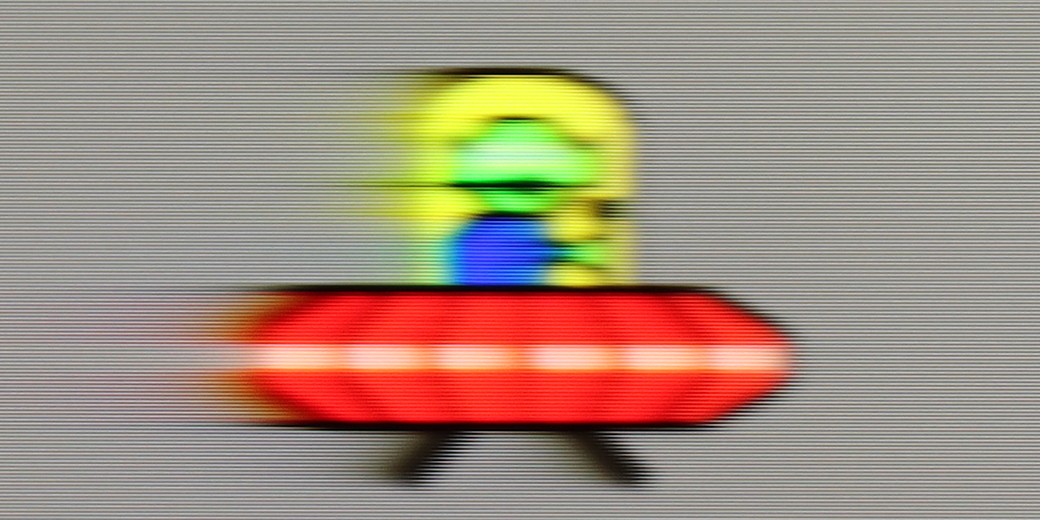

Philips OLED769 features a multi-stage motion smoother called "Motion Style", which will satisfy users who appreciate the ability to customise the fluidity of motion in films. With this function, you can set the image to be more frame-like or smooth, resembling a theatrical effect. This is a great solution for those who want to adapt the displayed content to their visual preferences. Gamers will also not be disappointed, as the television, like most OLEDs, is equipped with a 120Hz panel. This provides exceptional fluidity and dynamism of the image. Unfortunately, Philips OLED769 does not have the BFI (Black Frame Insertion) feature, which could further improve motion fluidity and sharpness. Despite this limitation, the television still offers excellent visual experiences for both cinema lovers and gamers. This is definitely one of its strong points.
Hisense U8Q features a panel that can refresh the image up to 165 Hz in 4K resolution. In practice, this will primarily be utilised by PC gamers, but as the saying goes – it’s better to have it than not 😊. For films and series, we have a built-in smoothness enhancer called Ultra Motion Smoothness. In the settings, it can be easily adjusted to suit personal preferences – whether we want a more “cinematic” frame rate or a smooth, theatrical spectacle.
Console compatibility and gaming features
10/10
8.5/10
- ALLM
- VRR
- VRR range40 - 120Hz48 - 288Hz
- Dolby Vision Game Mode
- Correct implementation of HGIG
- 1080p@120Hz
- 1440p@120Hz
- 4K@120Hz
- Game bar

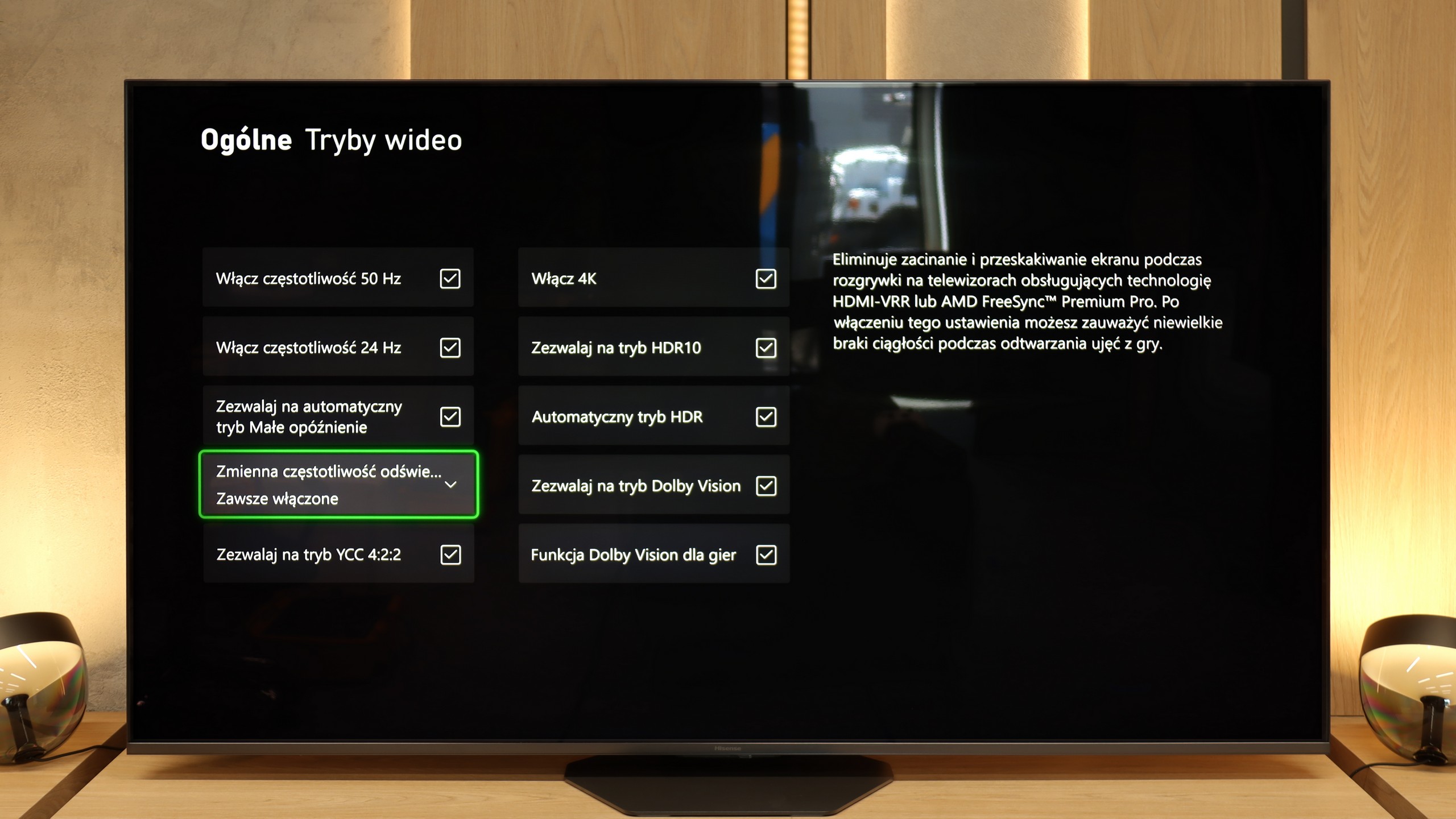

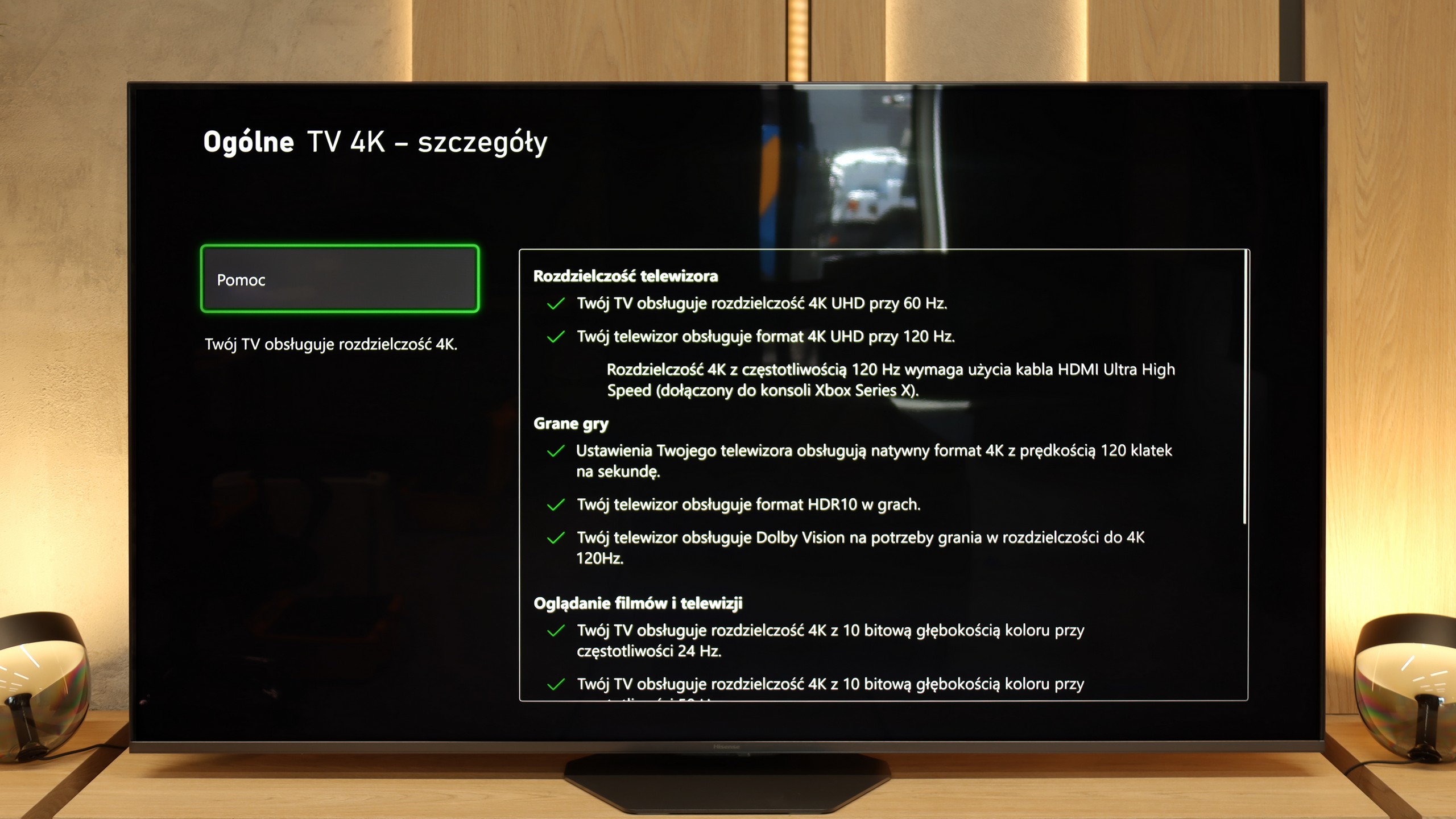

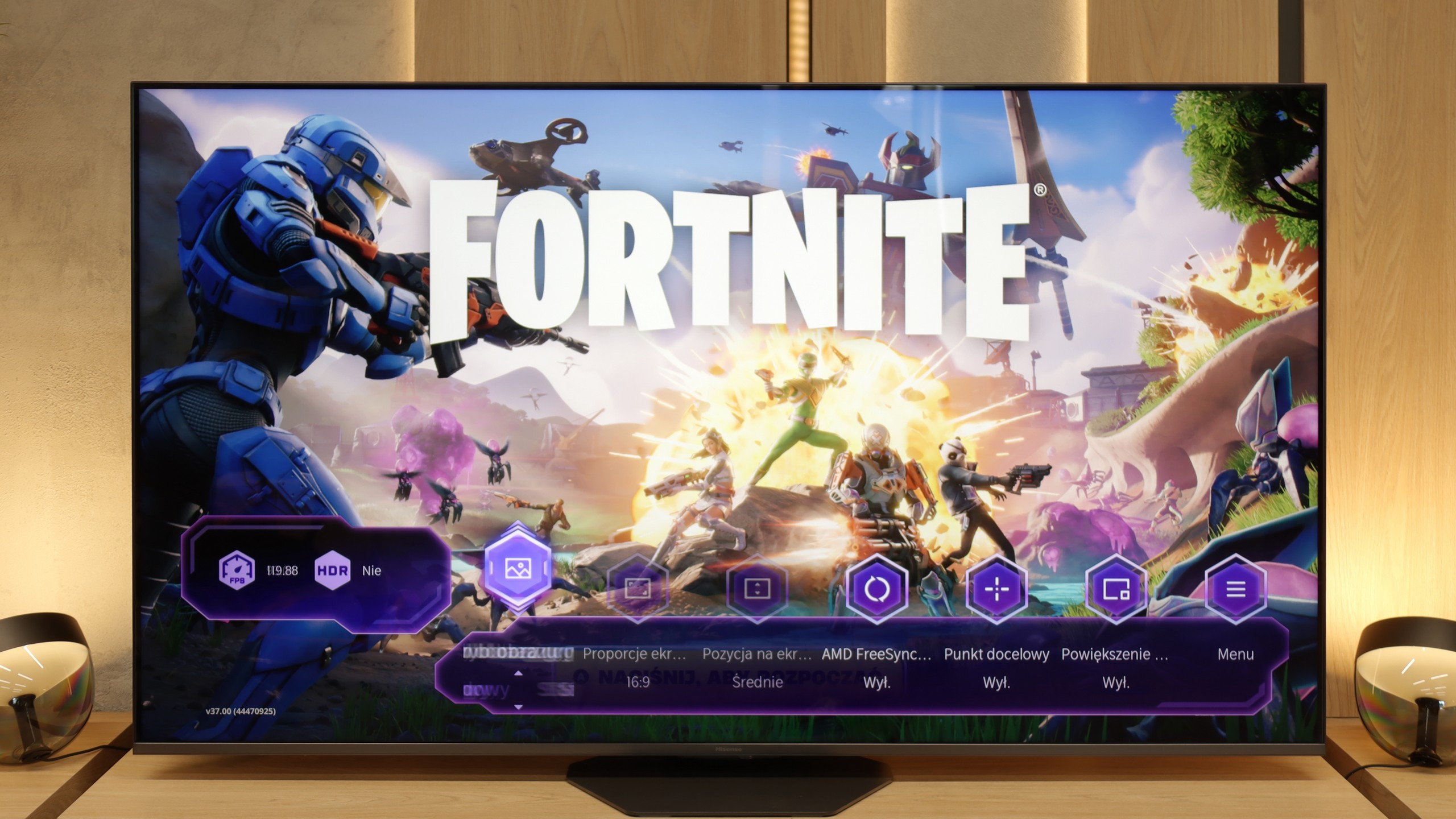

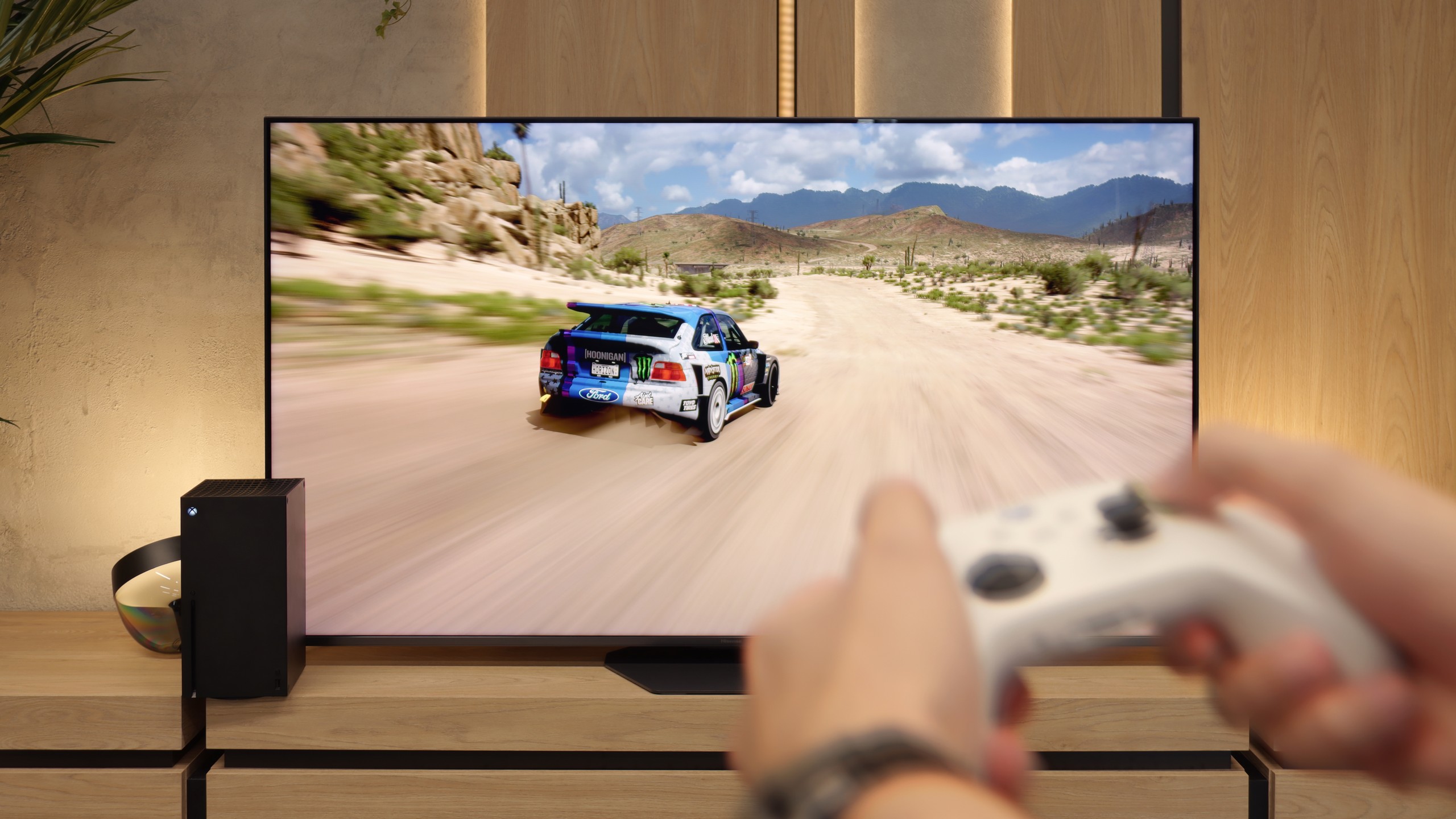
Philips OLED769 has been designed with gamers in mind, offering full compatibility with consoles and the highest quality of gameplay. The television received the maximum rating in this category, providing everything that the heart desires. With HDMI 2.1 ports fully supporting ALLM (Auto Low Latency Mode) and VRR (Variable Refresh Rate), the television ensures smooth and hassle-free gaming. ALLM automatically switches the television to low latency mode, while VRR eliminates stuttering and screen tearing, resulting in fluidity and stability in gaming. The Dolby Vision gaming feature is another advantage, although it only works at a frequency of 60 Hz. Most casual gamers will likely not feel the lack of a higher frequency; however, more demanding users may have some reservations. This allows for enjoyment of a dynamic range of tones and realistic images, enhancing the gaming experience. PC gamers will also not be disappointed, as Philips OLED769 offers full compatibility with Nvidia graphics cards, thanks to support for G-Sync. This technology synchronises the refresh rate of the television with the graphics card, eliminating tearing and stuttering, resulting in excellent image fluidity.
Philips OLED769 is a television that perfectly meets the needs of gamers, offering a wide range of advanced features and technologies that significantly enhance gameplay quality and user comfort.
In terms of features, the Hisense U8Q has practically everything one could expect from a modern gaming television. Thanks to the new processor, the manufacturer managed to implement as many as three HDMI 2.1 ports, so there is no problem connecting several consoles or a computer. On top of that, it includes all the key technologies – Game Bar with parameter preview, variable refresh rate (VRR), automatic low latency mode (ALLM)… in a word, a complete set.
But as is often the case with Hisense, it fell a bit short of perfection. The biggest drawback remains the lack of support for the HGiG format, which allows the brightness of the television to be adjusted to the console and maximises HDR in games. It’s a shame, because if this element were included, we would have a device practically made for gamers. As it stands, the U8Q remains “only” a very good choice 😉
Input lag
9.8/10
9.8/10
SDR
HDR
Dolby Vision
The input lag on the Philips OLED769 is truly impressively low. At a frequency of 120Hz, values hovering around 5 ms make a huge impression, and for a frequency of 60Hz, 13 ms is also an excellent result. Such low latencies ensure a quick response to player movements, which is crucial for smooth and responsive gameplay. The only thing that can be criticised is the lack of support for Dolby Vision at materials/games with a refresh rate of 120Hz. Nevertheless, the television still offers incredible visual experiences and excellent specifications that will satisfy any gamer.
The Hisense U8Q really handles signal delay well. In 120 Hz mode, the input lag is around 10 ms, while with 60 Hz content it hovers around 18 ms. These are values that place it among the fast televisions, and in practice, it is difficult to have any significant complaints about them. The response is instantaneous; controlling a character or a car on the screen happens without perceptible delays. Whether someone is playing fast-paced shooters or calmer narrative titles, the U8Q performs excellently.
Compatibility with PC
7.6/10
8.4/10

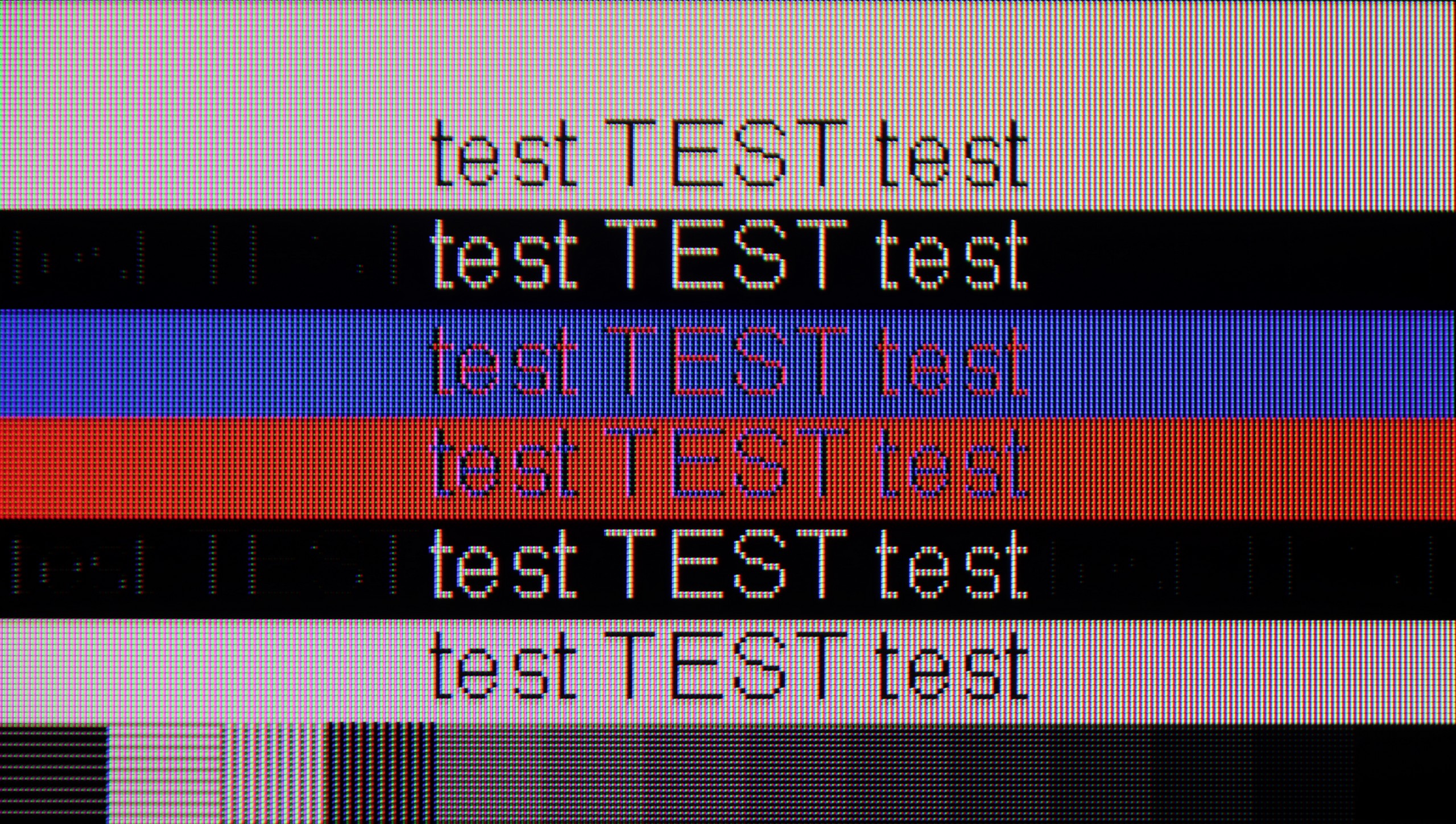
OLED769 performs excellently in collaboration with PCs. The rating in this category is very good, primarily due to the great readability of fonts, regardless of the background colour. The support for chroma 4:4:4 further enhances image quality, ensuring clear and sharp details. The low response time is another advantage of this model, which translates into smoothness and responsiveness during work and gaming. All of this makes the Philips OLED769 an ideal choice for PC users seeking a large screen with high image quality and excellent parameters.
As we mentioned regarding the features for gamers – Hisense U8Q also communicates well with computers. The 4K panel with a refresh rate of 165 Hz is impressive on its own, and at Full HD resolution, it can even boost to 288 Hz. This is great news for e-sports fans, where speed of reaction matters most, rather than the highest image quality. Additionally, it supports G-Sync and FreeSync, so gameplay is smooth, without stutters and annoying frame tearing.
A pleasant surprise is the presence of a USB-C port with DisplayPort functionality for laptops or even phones. This is a true novelty in televisions, and it's quite possible that Hisense will be a pioneer here, setting the direction for the competition.
When it comes to working with text, we must mention one small inconvenience. Although the U8Q correctly handles chroma 4:4:4, it has issues displaying very thin, horizontal fonts. This means that some subtitles or interface elements may be hard to read. Probably no one buys this model with office work in mind, but if someone were to have such a plan – it’s worth keeping this in mind.
Viewing angles
7.5/10
3.2/10
When it comes to viewing angles, Philips OLED769 performs excellently, as is the case with all OLED televisions. The image remains clear and does not lose quality regardless of the viewing angle. This means you can enjoy exceptional picture quality even when watching from the side or from more unusual locations in the room. The only televisions that offer even better viewing angles are those equipped with QD-OLED and OLED MLA panels. These technologies can provide even greater stability and image clarity from various angles. However, compared to standard LCD televisions, Philips OLED769 still offers significantly better viewing angles, making it a great choice for large rooms and family movie nights.
In terms of viewing angles, the Hisense U8Q performs averagely – typical for a VA panel. It's a classic compromise: in exchange for much better blacks and contrast than in IPS panels, we must accept that watching from a wider angle does not look as good. Colours begin to lose intensity, and the picture slightly brightens. For a viewer sitting directly in front of the television – it’s a dream. For someone who sits more to the side – it’s a bit less so.
TV efficiency during daytime
4.6/10
8.2/10

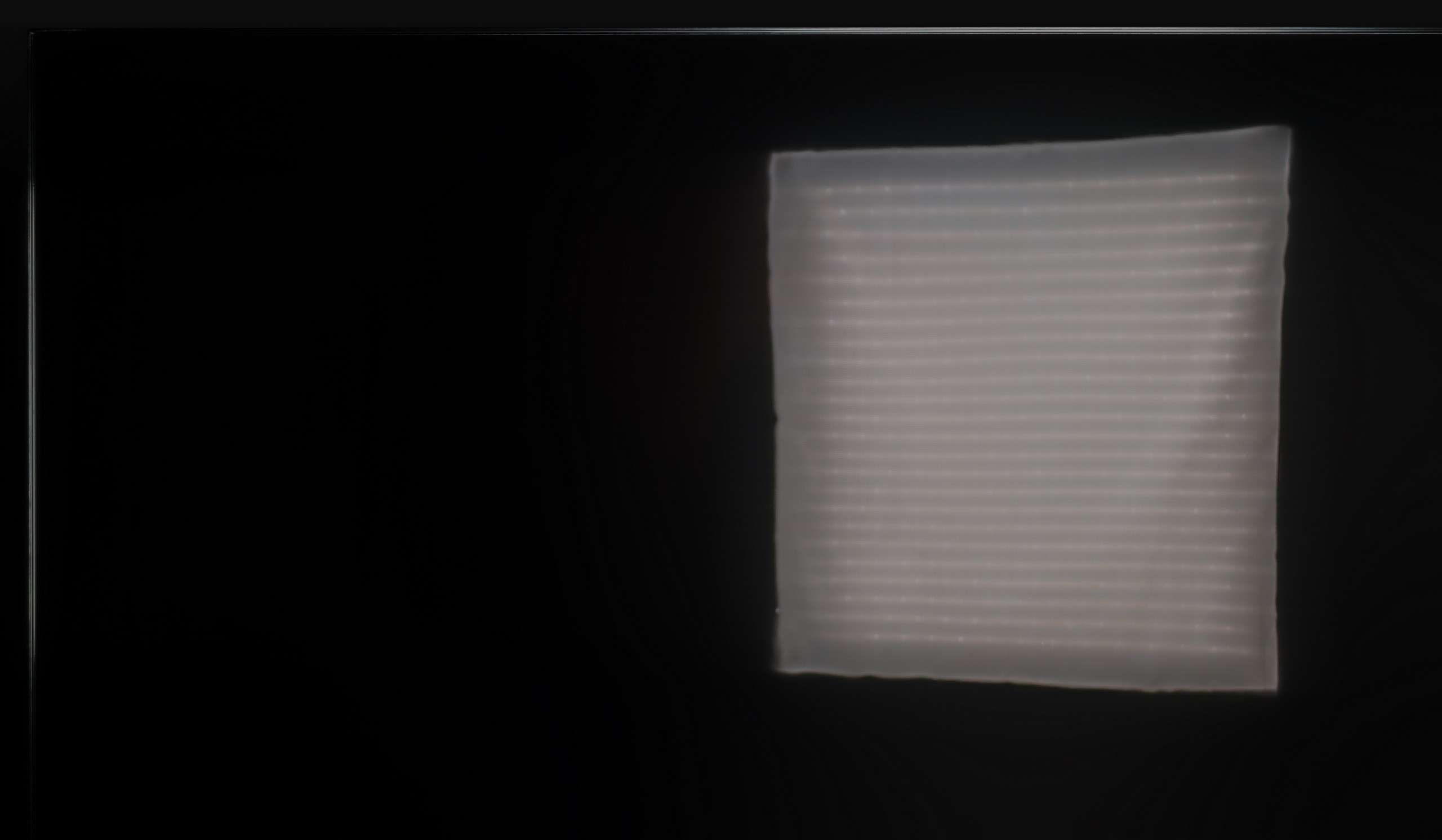


Matrix brightness
Average luminance SDR
Hisense U8Q: 914 cd/m2
Philips OLED769: 258 cd/m2
The performance of the television Philips OLED769 during the day leaves something to be desired. The screen, although satin, moderately suppresses reflections, which can be noticeable in bright rooms. The low rating is primarily due to the rather average brightness of the television—250 nits is not impressive and may not be sufficient to ensure proper image quality in strong daylight. This makes viewing on sunny days potentially less comfortable, and the image details may be harder to discern.
Hisense has opted for a new anti-reflective coating called Anti-Reflection PRO. It aims to enhance viewing comfort in challenging lighting conditions – and it indeed does the job. Reflections do not disappear entirely, but they are well controlled and do not interfere with daily viewing. However, the highlight is the brightness in SDR – around 1000 nits! This is a result that would make even the top super premium models proud. As a result, the U8Q performs excellently in sunlit rooms and can confidently be considered one of the best televisions for daytime viewing.
Details about the matrix
Subpixel Structure:

Panel uniformity and thermal imaging:

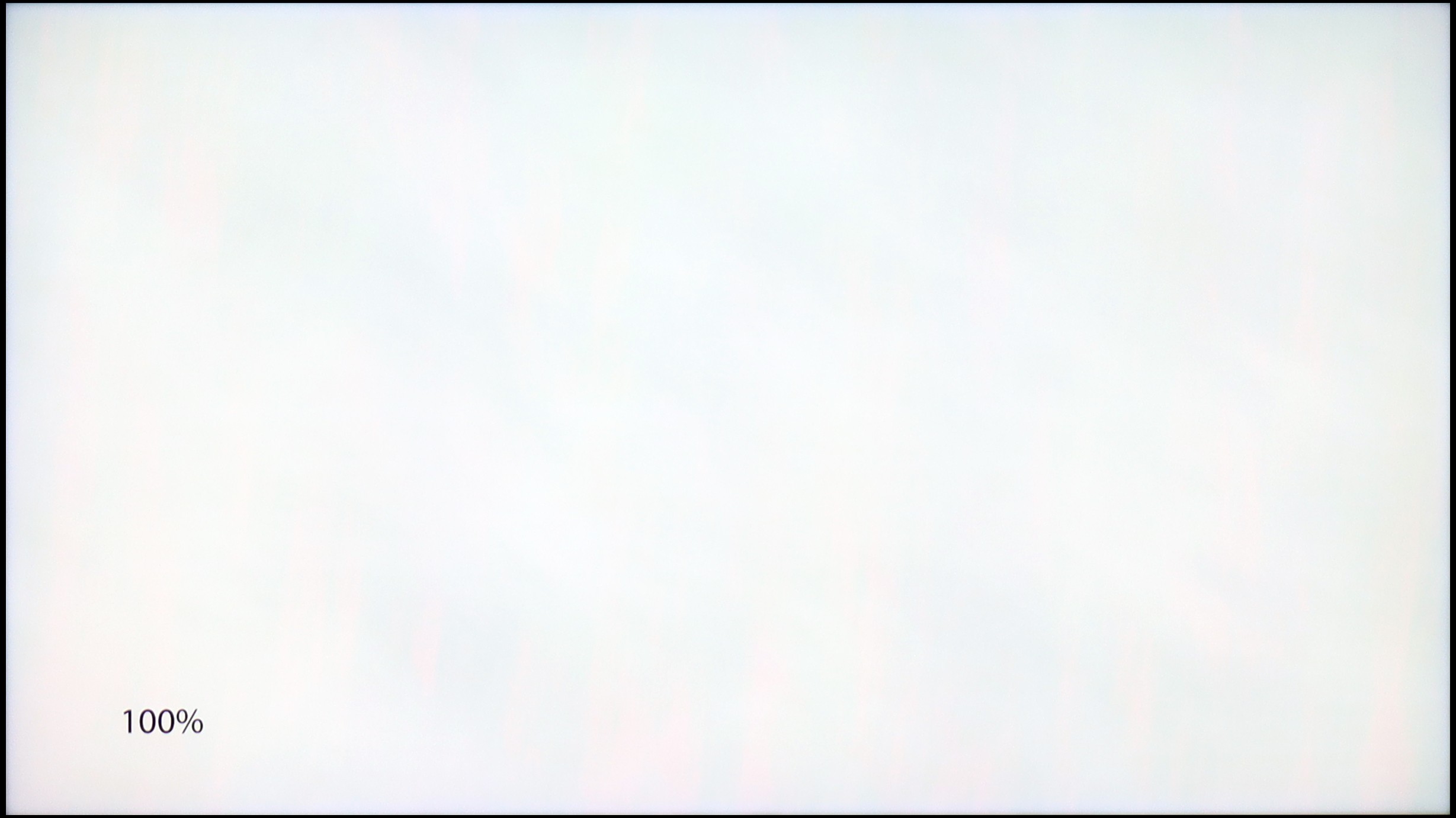
Philips OLED769
Hisense U8Q
TV features
5.7/10
9.4/10
- HDMI inputs0 x HDMI 2.0, 4 x HDMI 2.1 48Gbps0 x HDMI 2.0, 3 x HDMI 2.1 48Gbps
- Other inputsToslink (Optical audio), RCA (Chinch)
- OutputsToslink (Optical audio), eARC (HDMI), ARC (HDMI), Mini-Jack (Headphones)eARC (HDMI), ARC (HDMI), Mini-Jack (Headphones)
- Network InterfacesWi-Fi 2.4GHz, Wi-Fi 5GHz, Ethernet (LAN) 100MbpsWi-Fi 2.4GHz, Wi-Fi 5GHz, Ethernet (LAN) 100Mbps
- TV receptionDVB-T, DVB-T2, DVB-S, DVB-S2, DVB-CDVB-T, DVB-T2, DVB-S, DVB-S2, DVB-C
Classic features:
- Recording to USB (terrestrial TV)
- Recording programming
- Picture in Picture (PiP)
- RF remote control (no need to aim at the screen)
- Backlit remote control
- Teletext
- Audio only mode
- Bluetooth headphones support
- Simultaneous Bluetooth headphones & TV audio
Smart features:
- AirPlay
- Screen mirroring (Windows Miracast)
- Voice search
- Voice search in native language
- Ability to connect a keyboard and mouse

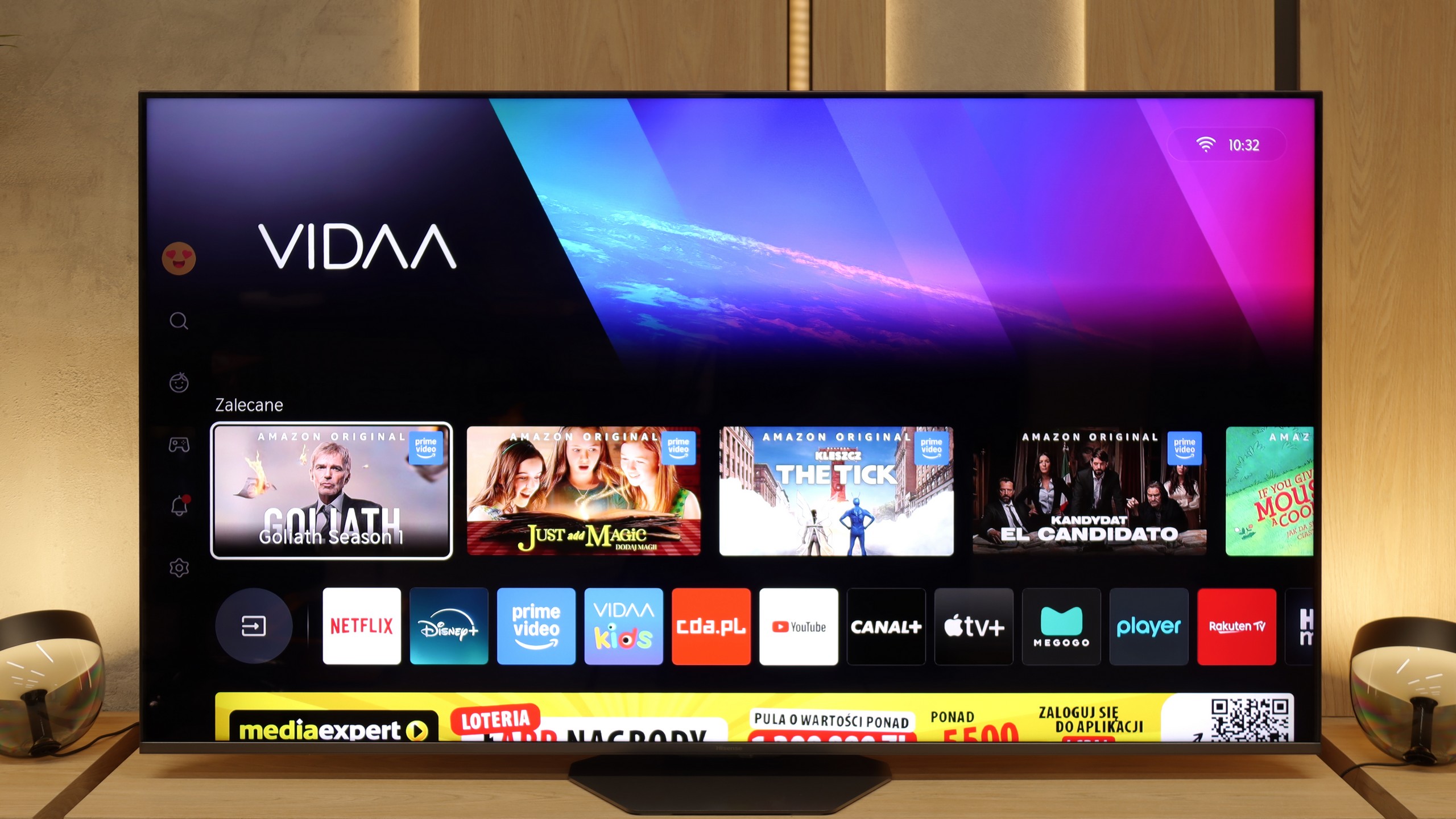
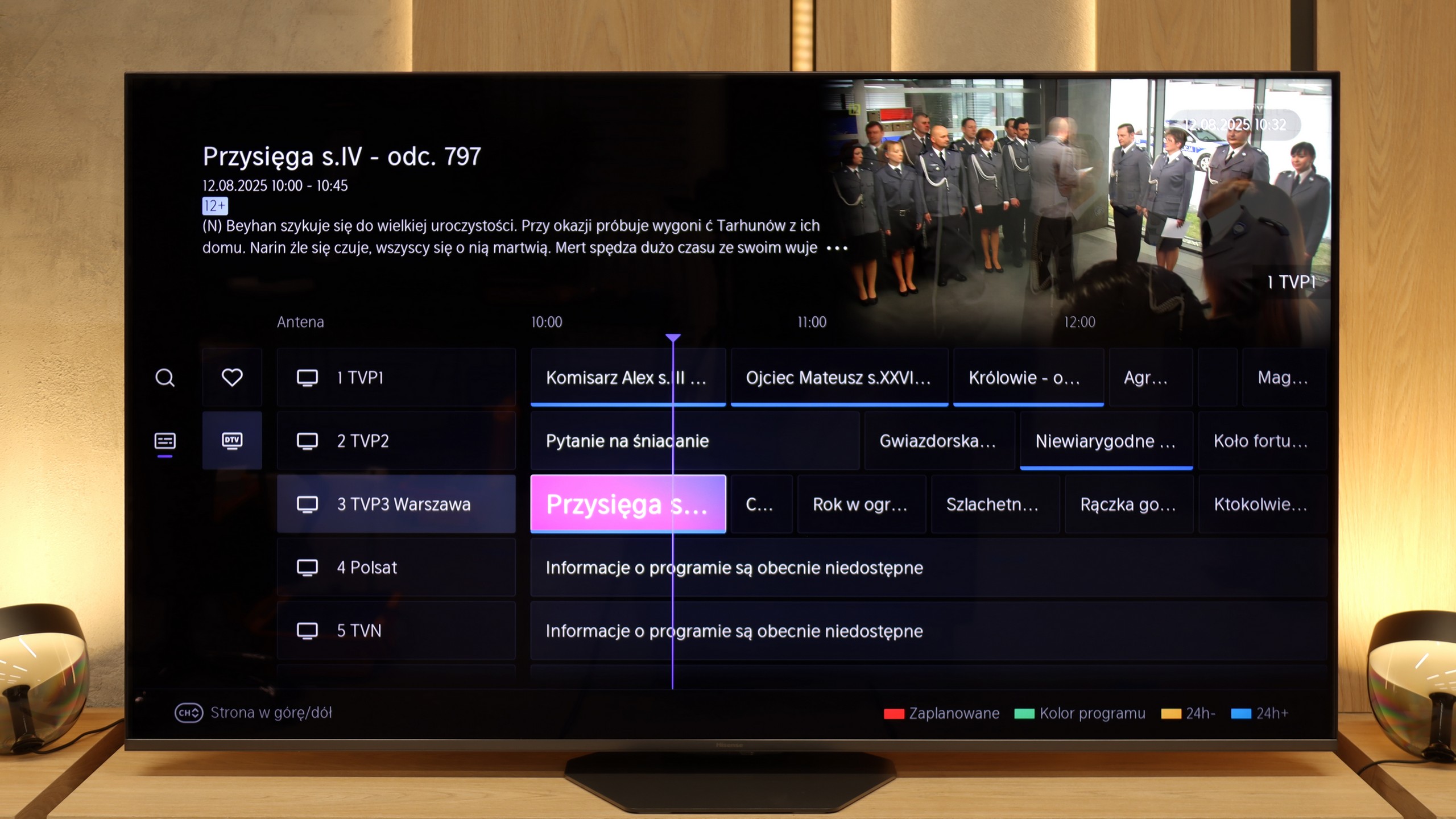
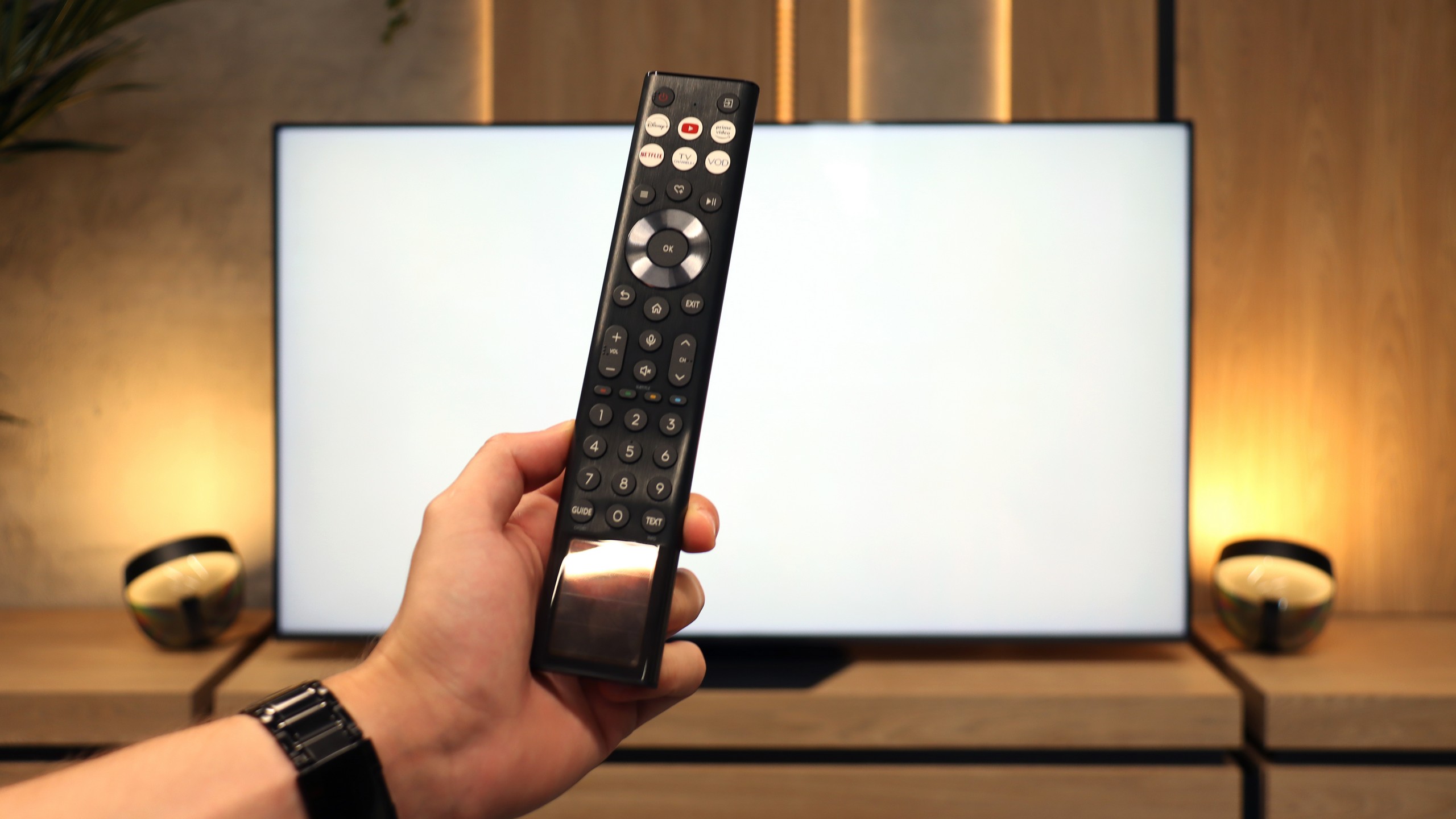
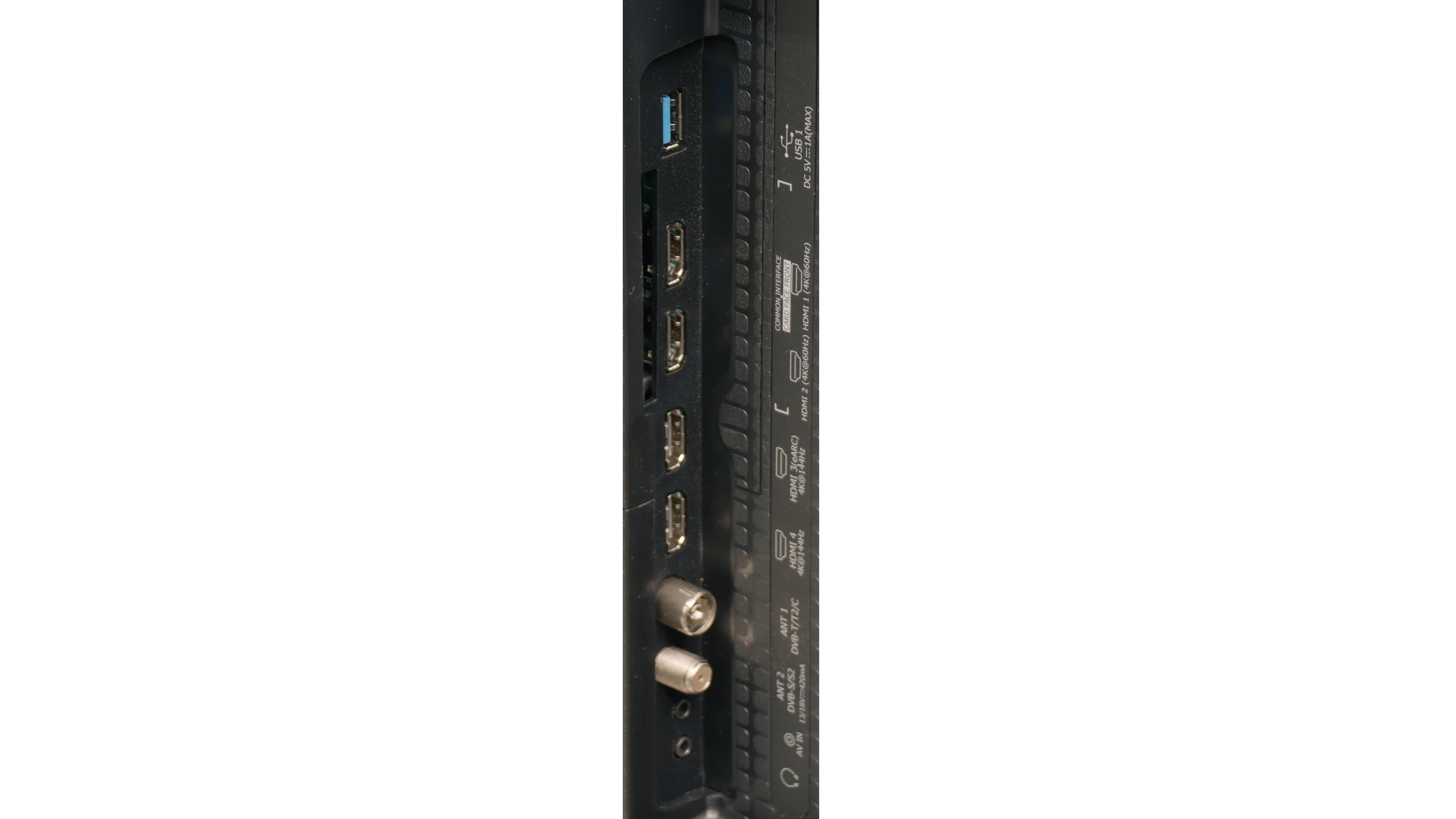
The greatest asset of the Philips OLED769 television is undoubtedly the three-sided Ambilight system. This technology truly makes a difference by extending the screen onto the walls around the television, creating the illusion of a larger screen. It not only enhances the visual experience but also adds a unique atmosphere, whether we are watching a film, playing games, or using other multimedia.
An interesting feature is the new remote control included with televisions operating on the TitanOS system. Its backlighting makes it very convenient to use, although its wireless functionality leaves something to be desired. Its hybrid design sometimes requires you to aim at the television screen, while at other times you do not, depending on which button you are using, which can be somewhat annoying.
In the context of the operating system, Philips has introduced a new strategy this year by replacing the previous open GoogleTV system with its own proprietary TitanOS. As is often the case with new technologies, TitanOS has its growing pains. At the moment, it only offers a few basic applications, and the app store does not impress with its variety. This may disappoint some users who expect a wide range of available applications. Additionally, the lack of support for AirPlay features and the ability to record onto USB are further limitations that could be problematic.
Classic Features
The Hisense U8Q runs on the VIDAA system, which can still be considered relatively new in the European market, but it must be admitted – the manufacturer has a lot to offer here. We find classic features that are still useful to many people: recording to USB, a clear EPG guide, and the ability to connect wired headphones, which will be especially appreciated by seniors. A nice addition is the presence of an audio jack – a connector that is slowly disappearing completely from televisions, yet here it has been retained.
USB-C in the Television!
A new feature in the U8Q is the USB-C port with DisplayPort support. This is an unconventional but very practical solution – thanks to it, you can connect a laptop or phone with one cable, even if these devices do not have an HDMI output.
Smart Features: VIDAA
When it comes to smart features, VIDAA works efficiently. The interface is fast, applications open without significant delays, and network functions – such as screen mirroring or AirPlay – work very well. Of course, there are minor shortcomings, but these are more details than real problems. The Achilles' heel remains the somewhat limited application library. However, it is worth remembering that the list of available programs can change from day to day – some disappear, while others appear, so the situation may improve.
Playing files from USB
8.2/10
8.3/10
Supported photo formats:
Maximum photo resolution:

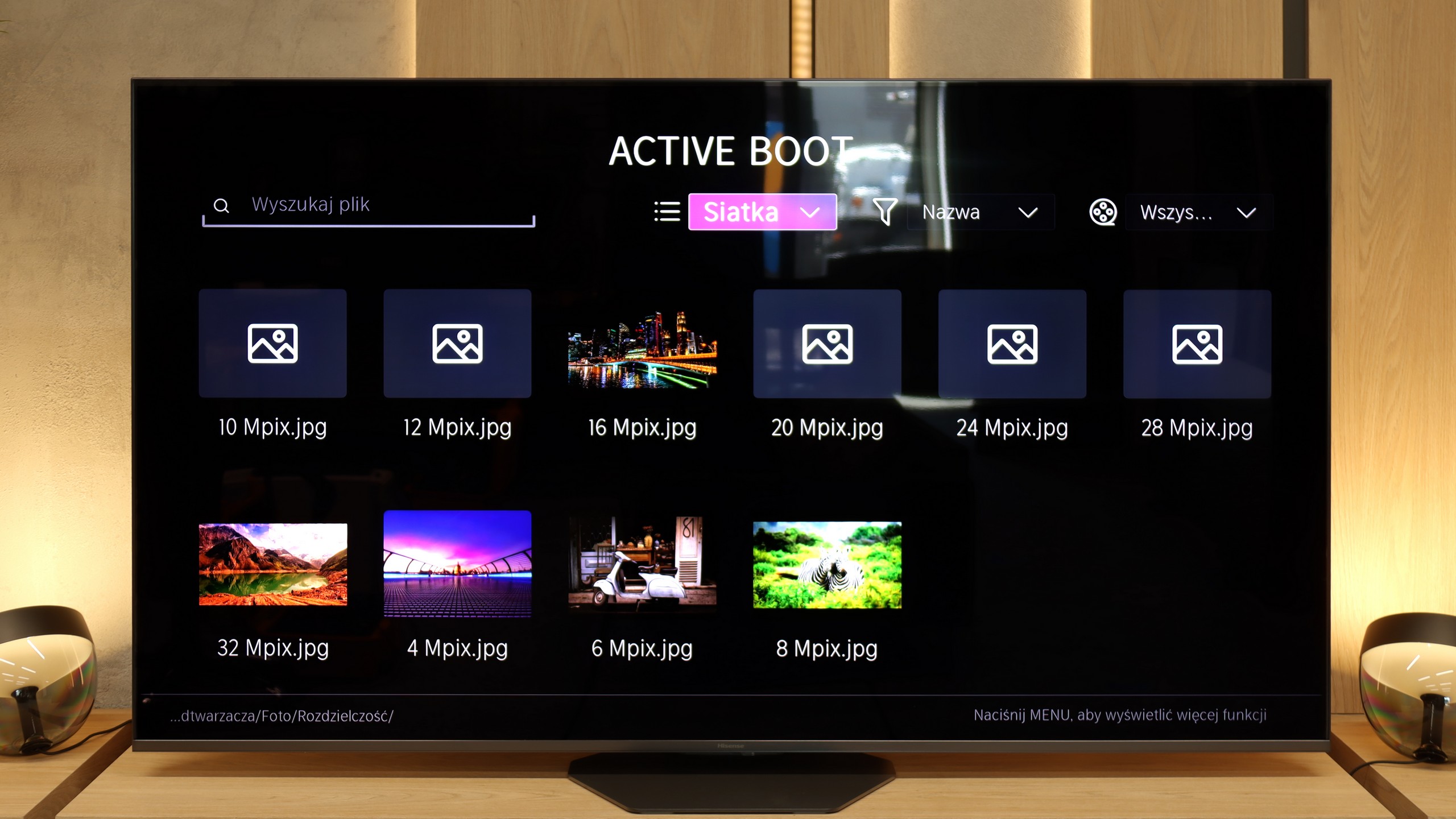
The built-in player in Philips OLED769 generally performs well. Although it may lack support for unusual formats, which could pose a problem for specific users, most should be satisfied with the available options. The built-in player in the TitanOS system allows for the reading of Polish characters and the changing of font colour, which additionally makes everyday use easier. Thanks to these features, playing files from USB is comfortable and versatile.
The built-in media player in the Hisense U8Q will be more than sufficient for most people. The television opens popular video and audio formats and also handles photos. However, there is a small caveat – not all photo resolutions are supported. Therefore, if we have photographs saved in a very high number of megapixels, they may simply not open. It is worth keeping this in mind to avoid unpleasant surprises during the family photo presentation.
Apps
6.2/10
7.7/10














































Sound
6.7/10
7.8/10
- Maximum volume-88dB
- Dolby Digital Plus 7.1
- Dolby True HD 7.1
- Dolby Atmos in Dolby Digital Plus (JOC)
- Dolby Atmos in Dolby True HD
- DTS:X in DTS-HD MA
- DTS-HD Master Audio
In the sound category, Philips OLED769 may not offer super dynamic sound, using speakers with a power of 2x10W. However, it is worth noting the support for all audio formats including Dolby and DTS. Thanks to this, despite the power limitations, users can enjoy high-quality sound with the help of external players.
The Hisense U8Q performs really well in terms of sound. The sound quality is pleasant, with a slight bass and quite decent mid-tones, making it entirely sufficient for everyday viewing of films, series, or gaming.
It gets a bit worse when we crank the volume up to 100%. This is rather a rare scenario, but it’s worth mentioning. With very strong bass, the rear speakers start to work so intensely that the television can slightly 'shudder', and the sound transitions into an unpleasant, plastic echo. Therefore, it’s best to stay within the range of 70–80% volume – at that level, the U8Q sounds clear and pleasant, without any unwanted effects.
Acoustic Measurements
No acoustic data
88dBC (Max)
75dBC


